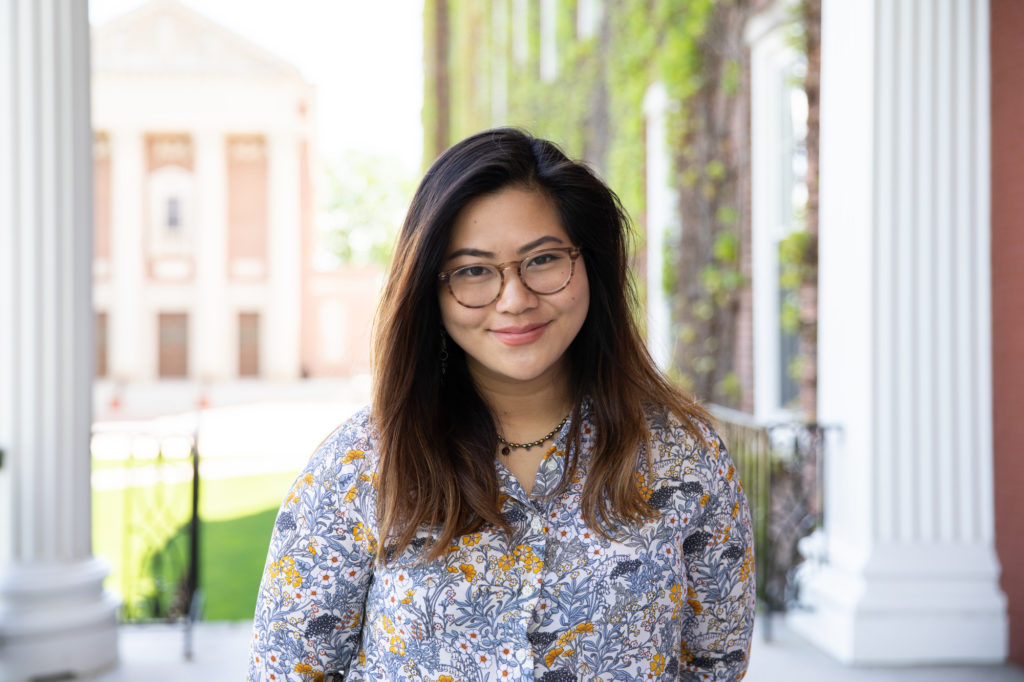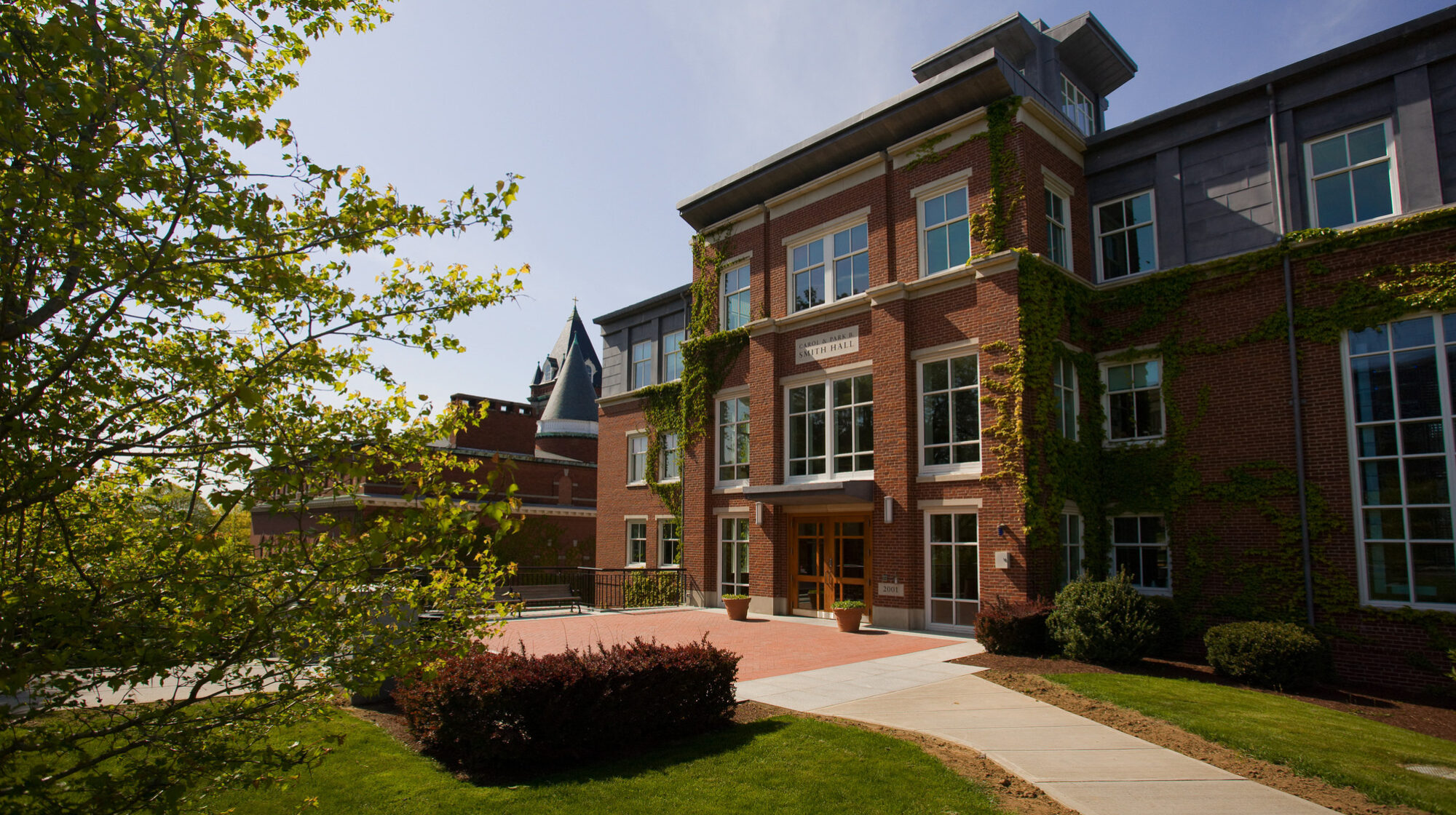
Editor’s Note: This article was published on the Holy Cross news website on May 22, 2019. It was written by Jane Carlton. Mia Yee ’19, in addition to being the 2018-2019 Fenwick Scholar, is also an Ignite Fund recipient.
Every year, Holy Cross names a Fenwick Scholar — a student who spends the entirety of their senior year conducting independent research. But it’s not every year that student embarks on a study of ramen and other modern Asian American food culture. Mia Yee, the 2018-2019 recipient of the College’s oldest and most prestigious academic honor, conducted ethnographic research on Asian American food spaces, combining her passions — and majors — of anthropology and architectural studies.
Yee, who also has a minor in studio art, spent a year observing and interviewing customers and restaurant workers at innovative eateries in the Boston area for her research. Now, we turn the tables and ask Yee about her project, the research process and how Holy Cross has made a lasting impression.
How would you describe your research in a nutshell?
I did ethnographic field research in contemporary Asian food places that serve trendy foods, like ramen, bubble tea, fusion, that type of thing. I focused on spaces that deviated away from what we normally see in American Chinese or sushi restaurants. I was drawn to places that have a lot of aesthetic props and are more modern or global.
There was a moment in Snappy Kitchen (one of the restaurants I feature in my research), where one of the co-owners said, “I don’t like cherry blossoms; I don’t like maneki-nekos,” which are the waving cats. They’re these very Americanized symbols of Japan.
I interviewed a number of Asian Americans, mostly millennials, to get their take on how these spaces are constructing their experiences as Asian Americans.
Why food spaces? Why did you want to spend a year doing research there?
I’m Japanese and Chinese American. My dad is third-generation Chinese American, and my family is very Americanized and worked at the Kowloon Restaurant in Saugus, Massachusetts. In college I became really interested in how space intersects with race, class and gender. I wanted to look at how spaces are racialized. I thought that was a really cool concept that, in architecture, hasn’t been explored as much.
What were some of the questions you explored?
I was interested in the way that class and privilege come out in these spaces, and how that is tied up with ethnic hierarchies, like who immigrated here first. Who’s had the most time here? Who’s been alienated the longest, and who’s dealing with the brunt of it right now? And then also how socio-economic status plays in.
My time at Holy Cross has taught me that Asian and Asian American representation matters. I came from a high school that had many Asian Americans and then came to a college where I was one of the only Asian people in the classroom. I began to think about how and why our identities matter and all our intersectionalities — race, class, gender, ethnicity — matter.
Take for instance “Crazy Rich Asians.” Beyond being a rom-com, it’s noteworthy because it’s the first movie in 25 years to have an all Asian cast — and that matters. When Asian Americans go and eat in these trendy, cosmopolitan, modern food spaces, they gain social and cultural capital, which gives them a platform where they can say “Hey, look, Asian stuff is cool” and is a space where they don’t feel like an “other.”
What was it like to undertake a yearlong research project?
I was working on it every day, and I also spent the entirety of most breaks doing research. While it was hard to separate myself from my work, it was still highly academic and analytical. But sometimes the question was, does work really have to be separate from one’s identity? It gave me some perspective, as I was able to understand all the dynamics of being connected to my work and understanding my own place as a researcher.
As for the actual research, I think because my family has worked in restaurants my whole life, it helped immensely in terms of talking to proprietors. I was able to talk the talk, so to speak. I could talk about restaurant stuff and they were like, “Oh, you actually understand this.”
What did your path to becoming a Fenwick Scholar look like?
It took me a while to find my people here, but I’ve come to love parts of Holy Cross. I’ve met amazing friends, had amazing mentors and professors. That said, my Fenwick Scholar process was a little convoluted. It was not a straight shot. I started off thinking that I wanted to look at how general spaces are racialized. From there I focused specifically on food spaces. It’s really nice to see that projects about race and about class matter.
You’ve mentioned that Ann Marie Leshkowich, professor of anthropology, has made a big impact on your time at the College. How so?
Professor Leshkowich is one of the most brilliant people I’ve ever met. I went to her during my sophomore year fall semester and said, “I heard a few of Susan Rodgers’ students went to Indonesia. How can I do that?” She told me she was going to Vietnam the next summer, and suggested I do independent research with her. So I went to Vietnam with her. She has so much wisdom and so much humor. She’s known to be challenging as a professor, which I actually wrote about in my acknowledgements. But that has made me grow.
Yee’s Fenwick Scholar project was entitled “Asians Eat Food and Drink Bubble Tea: The Co-Construction of Contemporary Asian Food Spaces and Asian (American) Identity.” Her faculty advisors were Ann Marie Leshkowich and David Karmon, associate professor of visual arts.

